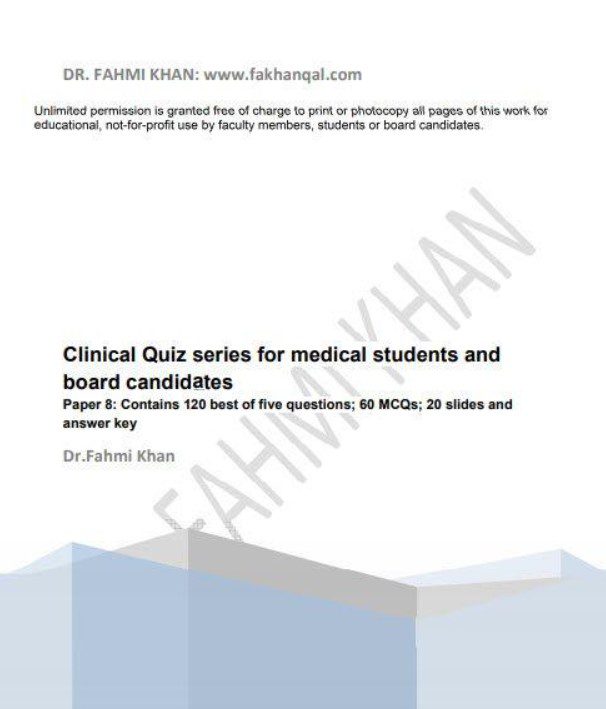What are HIV and AIDS?
Introduction
- The first reports of AIDS in the USA in 1981 among homosexual men and injecting drug users
- By the end of 2001, over 2.7 million cumulative AIDS cases had been reported to the WHO
- The developing world as a whole accounted for well over 80% of all AIDS cases
- It is estimated that about 7.1 million people have HIV infection and AIDS in Asia and the Pacific and 90% of them live in India, Thailand and Myanmar.
- HIV prevalence had reached 50% among sex workers, 33% in STD patients and 4.3% in pregnant women.
- Most HIV transmission in Asia and Eastern Europe is due to the sharing of infected needles among injecting drug users
- By the end of 2001, approximately 440,000 persons had HIV infection and AIDS, with a male: female ratio of 2.5:1( in North America and the Middle East)
The continent where the highest proportion of the population is infected with HIV is Africa.
 Natural course
Natural course
- Acute infection with HIV may be accompanied by a transient non-specific illness similar to glandular fever; it includes fever, malaise, myalgia, lymphadenopathy, pharyngitis, and a rash
- Physical examination may show no abnormality, but about one-third of patients have persistent, generalised lymphadenopathy (nodes of 1 cm or more in diameter in two or more non-contiguous extra-inguinal sites that cannot be explained by any other infection or condition).
- The commonest sites of lymphadenopathy are the cervical and axillary lymph nodes
THE HIV LIFE CYCLE
Binding to the cell;
Fusing with the cell membrane;
Replicating itself with reverse transcription;
Releasing new viruses from the cell
MODES OF TRANSMISSION
- Heterosexual intercourse accounts for more than 85% of cases of HIV infection in developing countries.
- Early epidemiologic studies showed unprotected sexual intercourse with multiple partners or an infected partner and the presence of STDs or a history of STDs
- Transmission of HIV-1 from mother to child vary from 13% to 48%.
(The immunologic status and viral load of the mother, maternal vitamin A deficiency, ingestion by the newborn at the time of delivery of the mother’s HIV-infected blood or amniotic fluid, and ingestion of infected breast milk.)
- Blood products and contaminated equipment
BIOLOGIC FACTORS INCREASING THE PROBABILITY OF SEXUAL TRANSMISSION OF HIV
Confirmed:– Acute primary HIV infection Advanced clinical stage of HIV
- Sexually transmitted diseases
- Anal intercourse
- Menstruation
- HIV-1 versus HIV-2
AIDS
AIDS is defined as an illness characterised by one or more indicator diseases.
In the absence of another cause of immune deficiency and without laboratory evidence of HIV infection certain diseases when definitely diagnosed indicate AIDS.
Regardless of the presence of other causes of immune deficiency.
Diseases diagnostic of AIDS without laboratory evidence
of HIV
- Candidiasis—oesophageal, pulmonary
- Cryptococcosis—extrapulmonary
- Cytomegalovirus disease—disseminated
- Cryptosporidiosis—diarrhoea that persists for more than one month
- Herpes simplex virus infection
- Mucocutaneous ulceration that lasts more than one month
- Pulmonary, oesophageal infection
- Kaposi’s sarcoma—patient younger than 60 years
- Mycobacterium avium—disseminated
Diseases diagnostic of AIDS if laboratory evidence of HIV exists
Recurrent or multiple bacterial infections—child aged under 13 years
- Candidiasis—pulmonary,
- Cervical carcinoma—invasive
- Cryptococcosis—pulmonary
- Cryptosporidiosis—with diarrhoea persisting for more than one month
- Cytomegalovirus disease—not in liver, spleen, or nodes
- HIV encephalopathy
- Herpes simplex virus infection—mucocutaneous ulceration that lasts for more than one month or pulmonary, oesophageal infection
- Histoplasmosis—disseminated
- Recurrent pneumonia within a 12 month period
WHO’s AIDS definition for AIDS surveillance
For the purposes of AIDS surveillance, an adult or adolescent(older than 12 years of age) is considered to have AIDS if at least two of the following major signs are present in combination with at least one of the minor signs are not known to be caused by a condition unrelated to HIV infection.
Major signs
- Weight loss10% of body weight
- Chronic diarrhoea for more than one month
- Prolonged fever for more than one month (intermittent or constant)
Minor signs
- A persistent cough for more than one month*
- Generalised pruritic dermatitis
- History of herpes zoster
- Oropharyngeal candidiasis
- Chronic progressive or disseminated herpes simplex infection
- Generalised lymphadenopathy
Expanded WHO case definition for AIDS surveillance
- For the purposes of AIDS surveillance, an adult or adolescent(older than 12 years of age) is considered to have AIDS if a test for HIV antibody gives a positive result and one or more of the following conditions are present:
- 10% body weight loss or cachexia, with diarrhoea or fever, or both, intermittent or constant, for at least one month, not known to be caused by a condition unrelated to HIV infection
- Cryptococcal meningitis
- Pulmonary or extrapulmonary tuberculosis
- Kaposi’s sarcoma
- Neurological impairment, which is sufficient to prevent independent daily activities, not known to be caused by a condition unrelated to HIV infection (for example, trauma or cerebrovascular accident)
- Candidiasis of the oesophagus (which may be presumptively diagnosed based on the presence of oral candidiasis accompanied by dysphagia)
- Clinically diagnosed life-threatening or recurrent episodes of pneumonia, with or without aetiological confirmation
- Invasive cervical cancer
Common AIDS-defining diseases
Developed world
- Pneumocystis pneumonia
- Oesophageal candida
- Non-Hodgkin’s lymphoma
- Tuberculosis (pulmonary and extra pulmonary)
Developing world
- Tuberculosis (pulmonary and extra pulmonary)
- HIV wasting syndrome
- Cerebral toxoplasmosis
- Cryptococcus meningitis
Proposed WHO staging system for HIV infection and disease
- Clinical stage 1: asymptomatic or persistent generalised lymphadenopathy, performance scale 1 (asymptomatic, normal activity)
- Now Clinical stage 2: weight loss 10% of body weight, minor mucocutaneous manifestations, varicella zoster within the last five years, recurrent upper respiratory tract infections (bacterial sinusitis), performance scale 2 (symptomatic but normal activity)
- Clinical stage 3: weight loss 10% of body weight, unexplained chronic diarrhoea for more than one month, unexplained chronic fever for more than one month, oral candidiasis, oral hairy leukoplakia, pulmonary tuberculosis within the past year, severe bacterial infections, performance scale 3 (bedridden 50% of day during the last month)
● And Clinical Stage 4: most other AIDS-defining diseases (but not pulmonary tuberculosis), performance scale 4 (bedridden 50% of day during the last month
Symptoms and Signs
- Weight loss
- Nausea
- Sinusitis
- AIDS dementia complex
- Oral lesions
- Candidal esophagitis
- Biliary disease
- Enterocolitis
- Endocrinologic manifestations
- Skin manifestations
- Myelopathy
Treatment
Recommended first-line regimens
- Zidovudine and lamivudine plus nevirapine or efavirenz
- And Zidovudine and lamivudine plus abacavir
- Zidovudine and lamivudine plus nelfinavir or low dose ritonavir
comprehensive care for people living with HIV and AIDS
- Available, accessible voluntary counselling and testing services
- Prevention and treatment of HIV-related illnesses
- Good nutrition
- Prevention and treatment of tuberculosis and other infections
- Family planning
- Prevention of further HIV transmission
- Respect for human rights
- Prevention and treatment of STIs
- Reduction of the stigma associated with HIV and AIDS
- Social, spiritual, psychological, and peer support
- Provision of antiretrovirals
- And Palliative care
Prevention and control
- Surveillance
- Counselling and health education
- Screening of people and donated blood
- Heat treatment of blood products
- Strategies to reduce high-risk behaviour in targeted populations
- Antiretroviral therapy to reduce mother to child transmission
- Protection of healthcare staff
- Treatment and control of STIs
CLARIFYING COMMON MISCONCEPTIONS
ABOUT HIV AND AIDS
- Since HIV is a virus, nothing that two uninfected people do can result in transmission of HIV.
- Although tiny amounts of virus and its antibody are detectable in urine and other body fluids of people with HIV, contact with tears, urine, and sweat from a person who is infected does not transmit HIV.
- With treatment during pregnancy, the risk of mother-to-child HIV transmission can be decreased to less than 2%.
- Worldwide, most HIV transmission is due to sex between men and women.
- The medicines, although very effective in delaying the onset of AIDS and progression to severe disease, do not cure HIV.
- HIV antibody testing can be done with saliva or urine samples.
 Natural course
Natural course







Leave a Reply